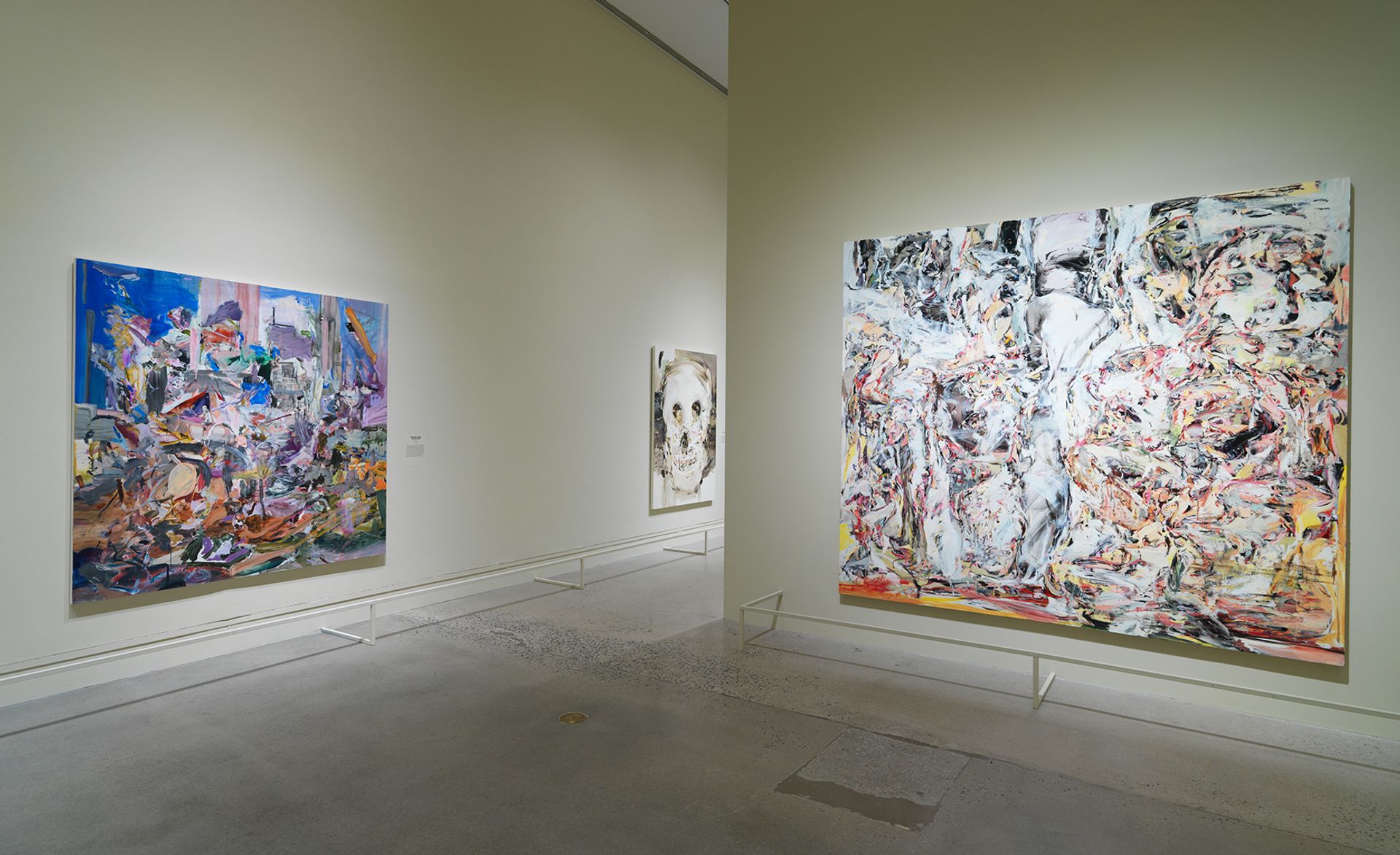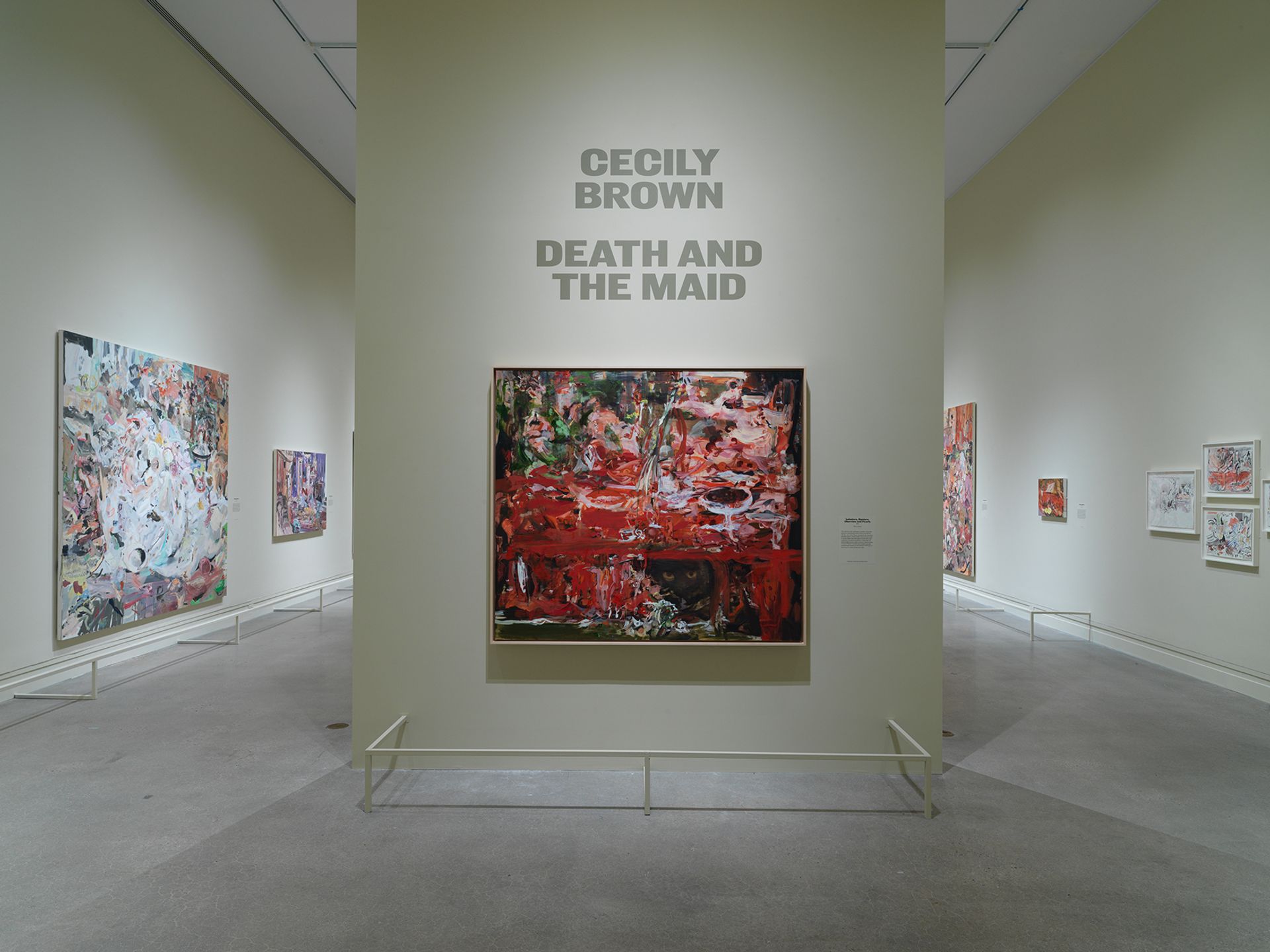When Cecily Brown graduated from the Slade School of Fine Art in London in 1993, the powers that be in the art world declared painting a dead medium. Between the popularity of the Young British Artists and the parallel rise of market-approved conceptual installation, oil on canvas seemed old-fashioned at best, stale at worst. This confluence of factors made Brown’s runaway success remarkable, but never unlikely – her fragmentary figurative abstractions reinvigorated painting for a new generation and distinguished her as a truly original storyteller across genres. His singular blood eye is highlighted in Death and the Maid at the Metropolitan Museum of Art in New York.

Installation view of Cecily Brown: Death and Maid
Photo: Paul Lachenauer, courtesy of Cecily Brown and the Met
Death and the Maid presents 50 paintings, drawings and sketches, its title referring to a string quartet by Schubert, Death and the Maiden, in which a terrified young woman begs death to pass on her. The works on display emanate a winking, psychologically charged reverence for European pictorial tropes like memento mori, vanitas (still lifes that symbolize mortality), and the romanticization of female pain.
Brown was inspired for many of the featured works by Victorian illustrator Charles Allan Gilbert’s 1892 double-image drawing Everything is vanity, which depicts a beautiful young woman looking into her mirror and seeing a gruesome skull looking back. This haunting visual informs compositions like the furiously expressionist triptych Beautiful face, full of misfortune (2008) and ink Untitled (Vanity) from 2005, where skulls and disembodied limbs unravel and coagulate in eerie, romantic bursts of paint. More recent paintings, such as Still life And Lobsters, Oysters, Cherries and Pearls (both from 2020), reimagine the decadent still lifes of Flemish artist Frans Snyders as sites loaded with texture and flow.

Installation view of Cecily Brown: Death and Maid
Photo: Paul Lachenauer, courtesy of Cecily Brown and the Met
“It’s deeply about precedent and playing with precedent, but also rejoicing in precedent,” says Ian Alteveer, associate curator in the Met’s modern and contemporary art department who worked closely with Brown on the exhibition. . “It also fits Cecily’s feeling that paint can do more than one thing at a time. Separating the two seems inauthentic.
As a young female painter in the limelight, Brown’s name became synonymous with hyper-sensual and sexualized compositions, a characterization that has remained, despite the enormous diversity of themes and imagery in her work. Alteveer made the conscious decision to highlight other aspects of Brown’s work in Death and the Maid.

Installation view of Cecily Brown: Death and Maid
Photo: Paul Lachenauer, courtesy of Cecily Brown and the Met
“The eroticism of the work has sometimes been overstated,” he says. “It’s often also what people can focus on first without allowing themselves to dig deeper. And so for me it was a deliberate choice to show really figurative things – there’s still a lot of eroticism in the exhibition, and I think that tension is still there.
At times in the exhibition, Alteveer’s curation feels like a love letter to painting itself that poses Brown as a steward of invigorating beauty and political boredom. “There are so many ways to get into the show, but I was thinking about how his career has been assessed to date, both in terms of moralizing success, but also in terms of being an artist who finds himself to be a woman,” he says. “There is also a powerful feminism in practice. It came together holistically, organically and also urgently.
• Cecily Brown: Death and Maid, Metropolitan Museum of Art, until December 3
